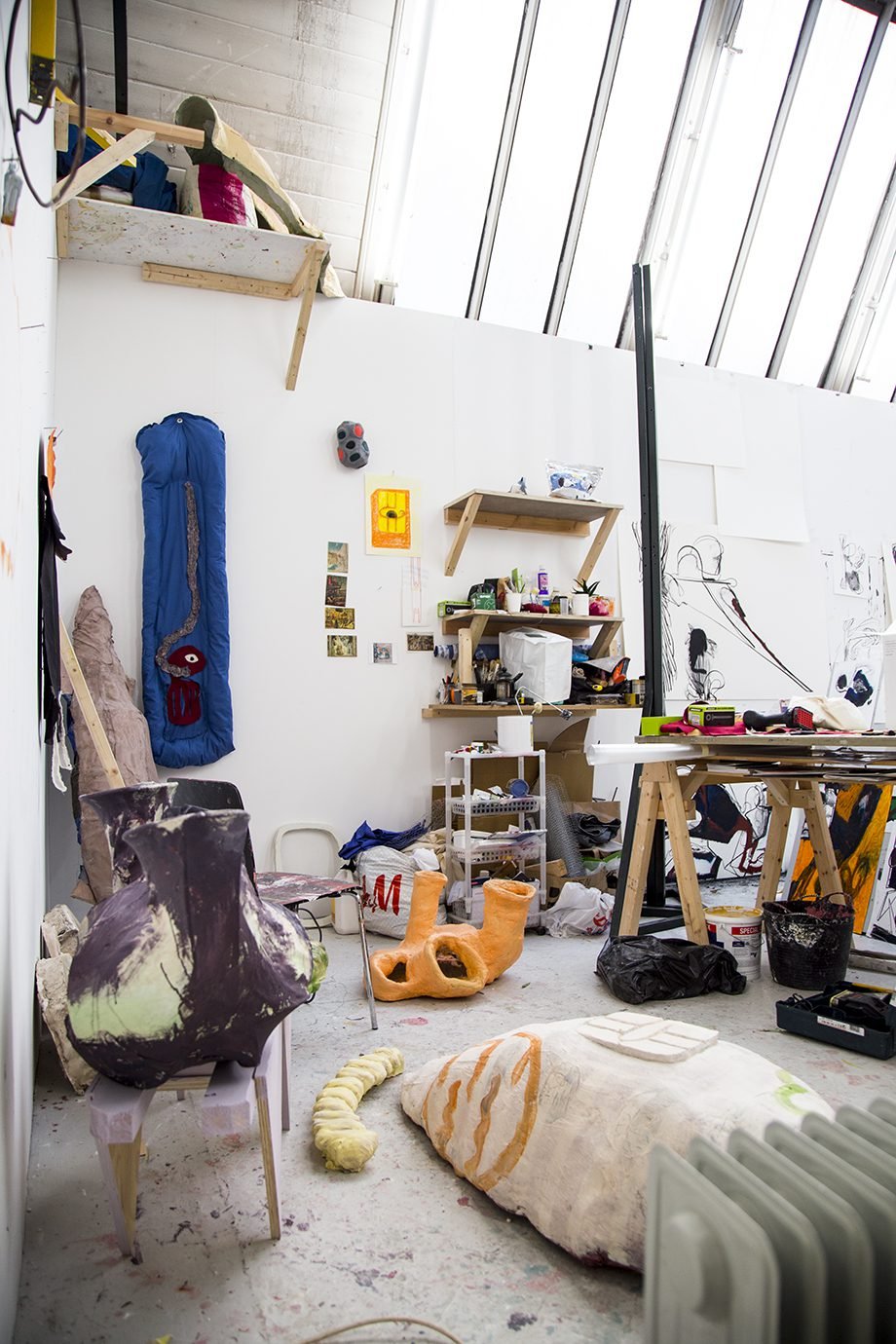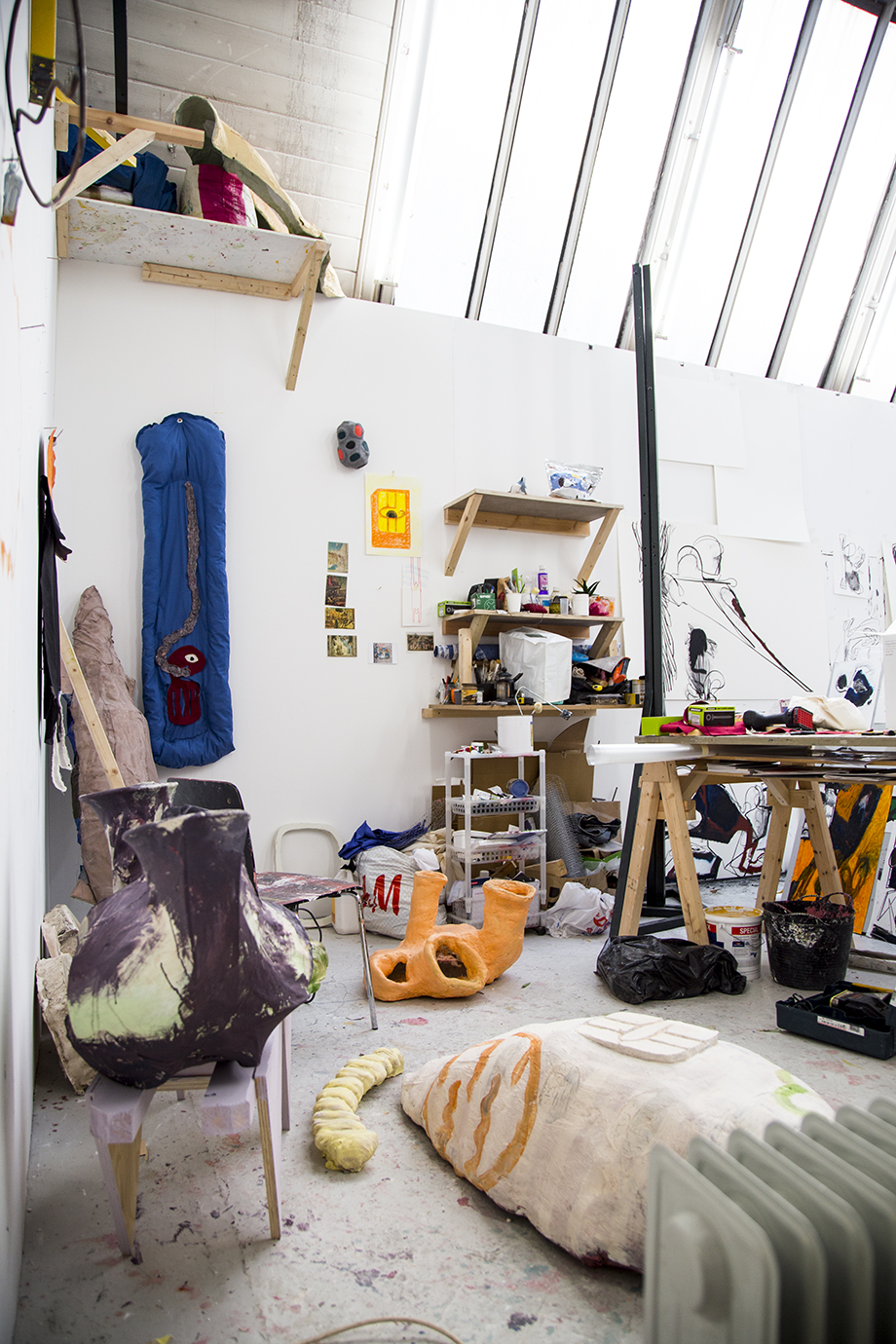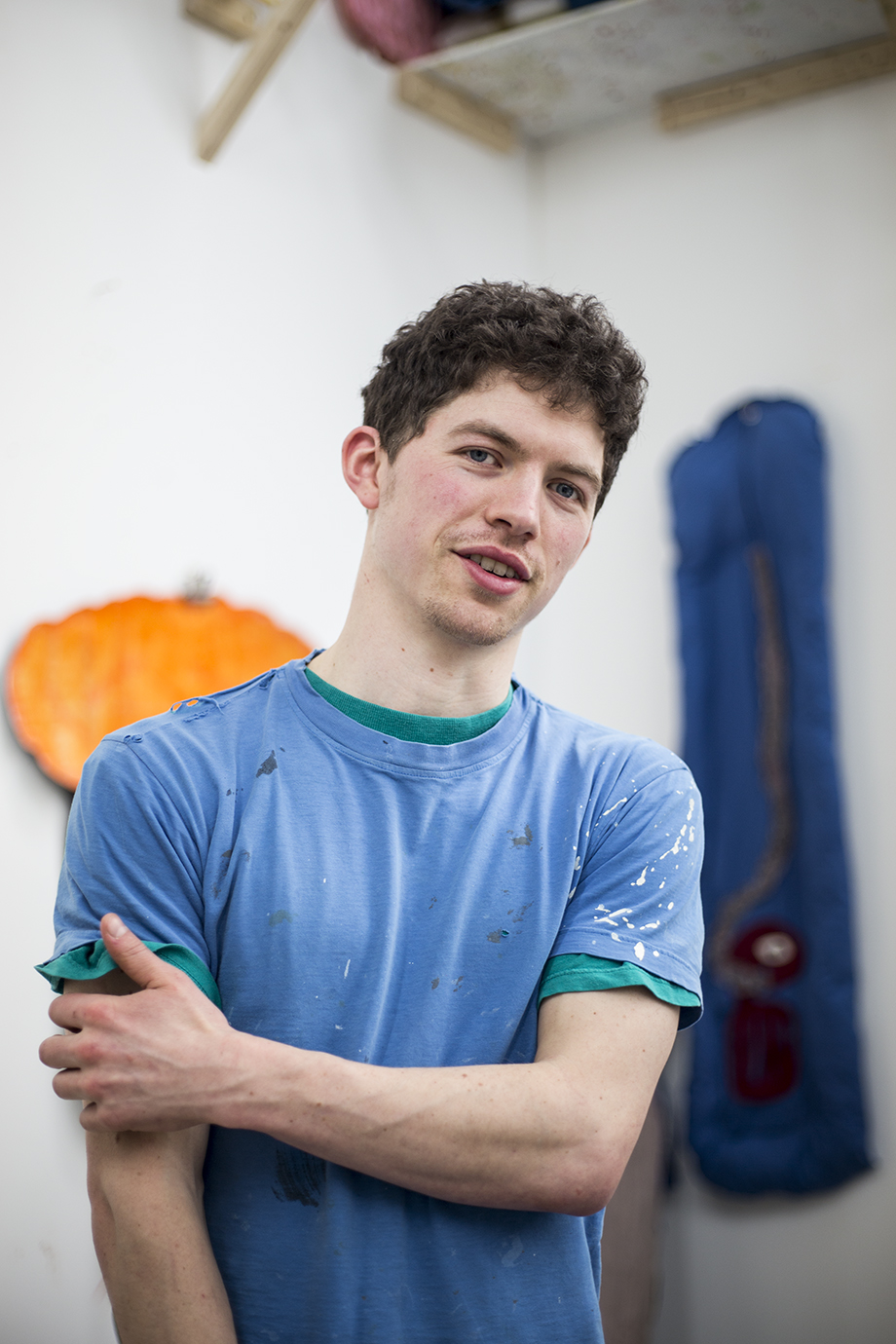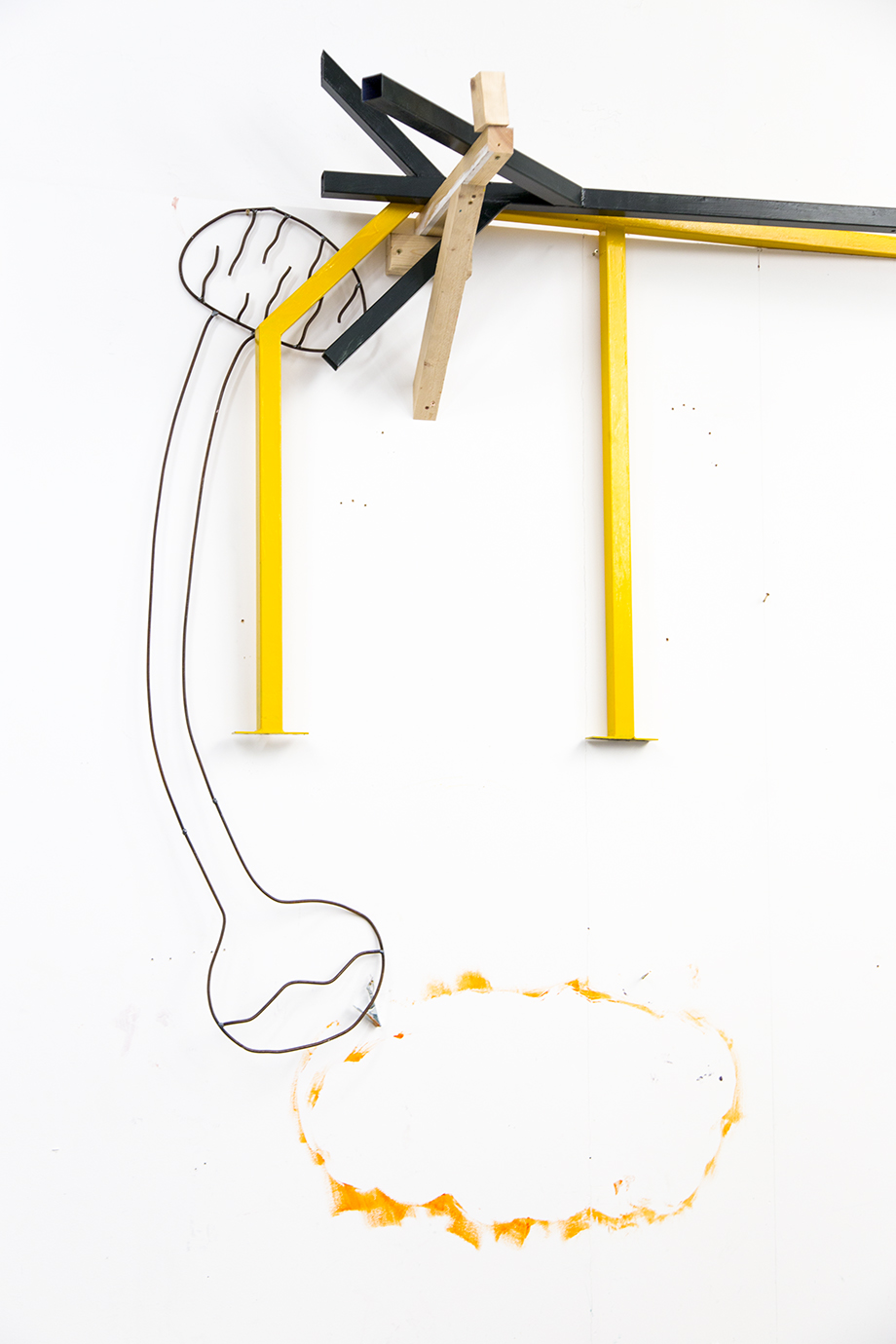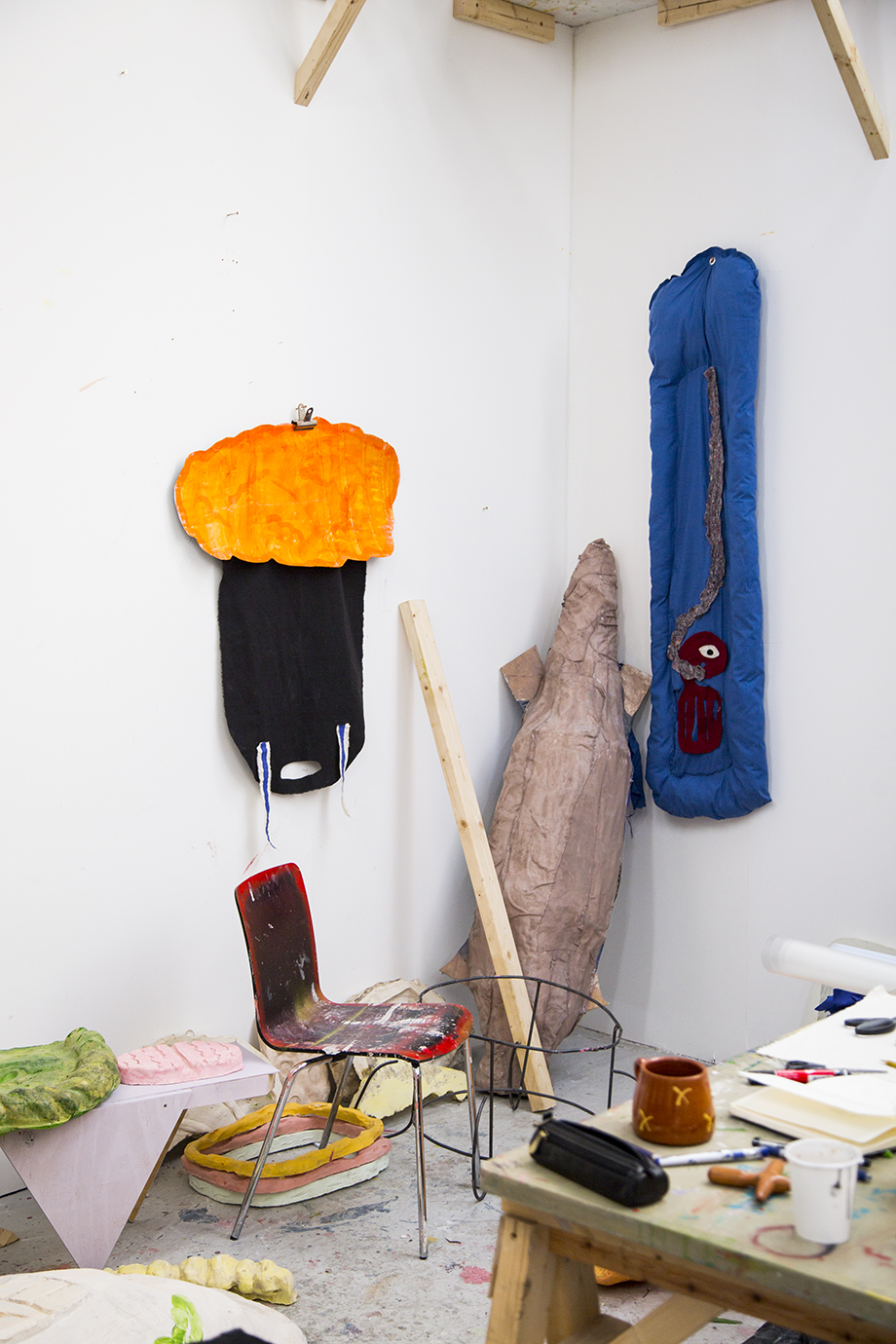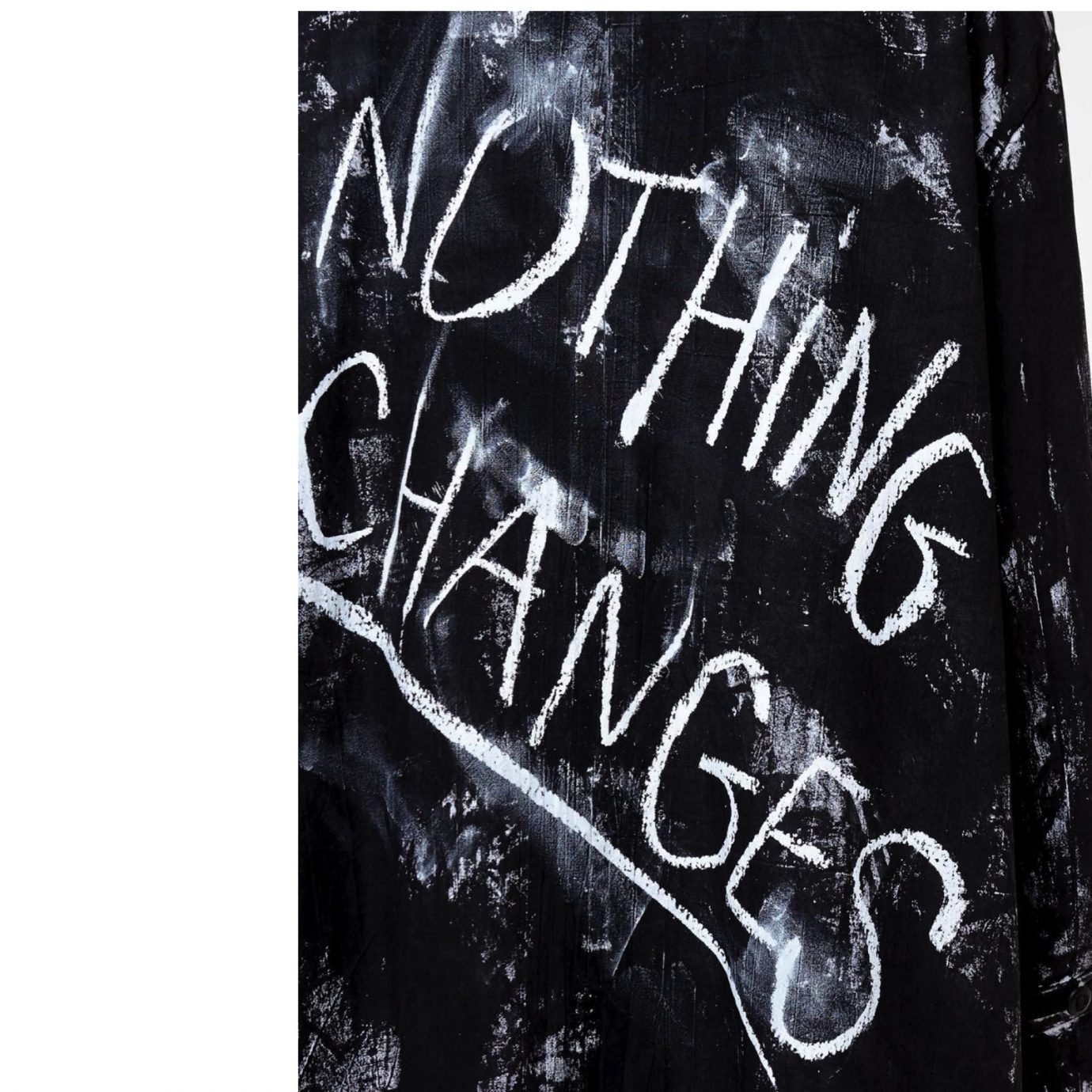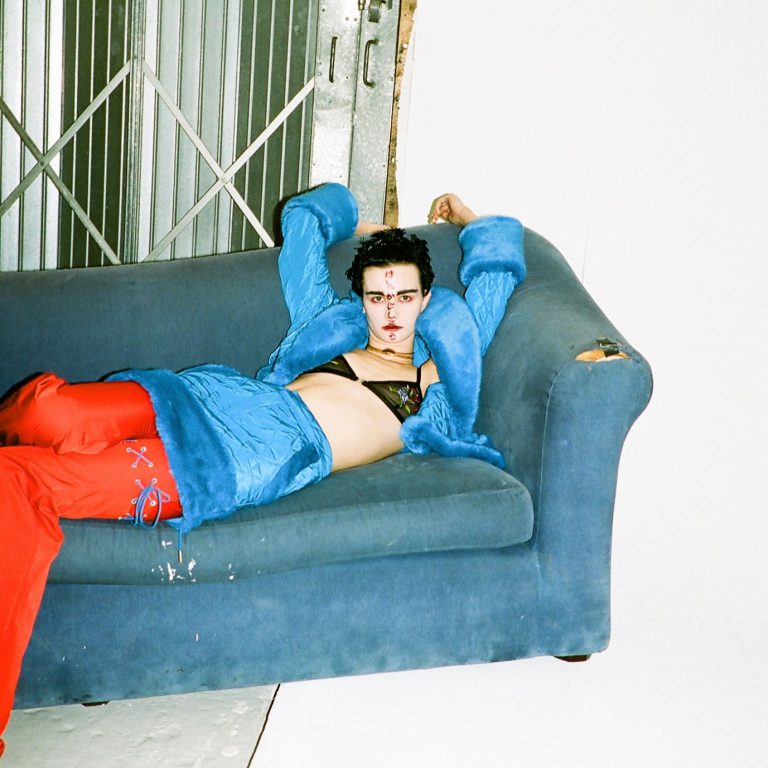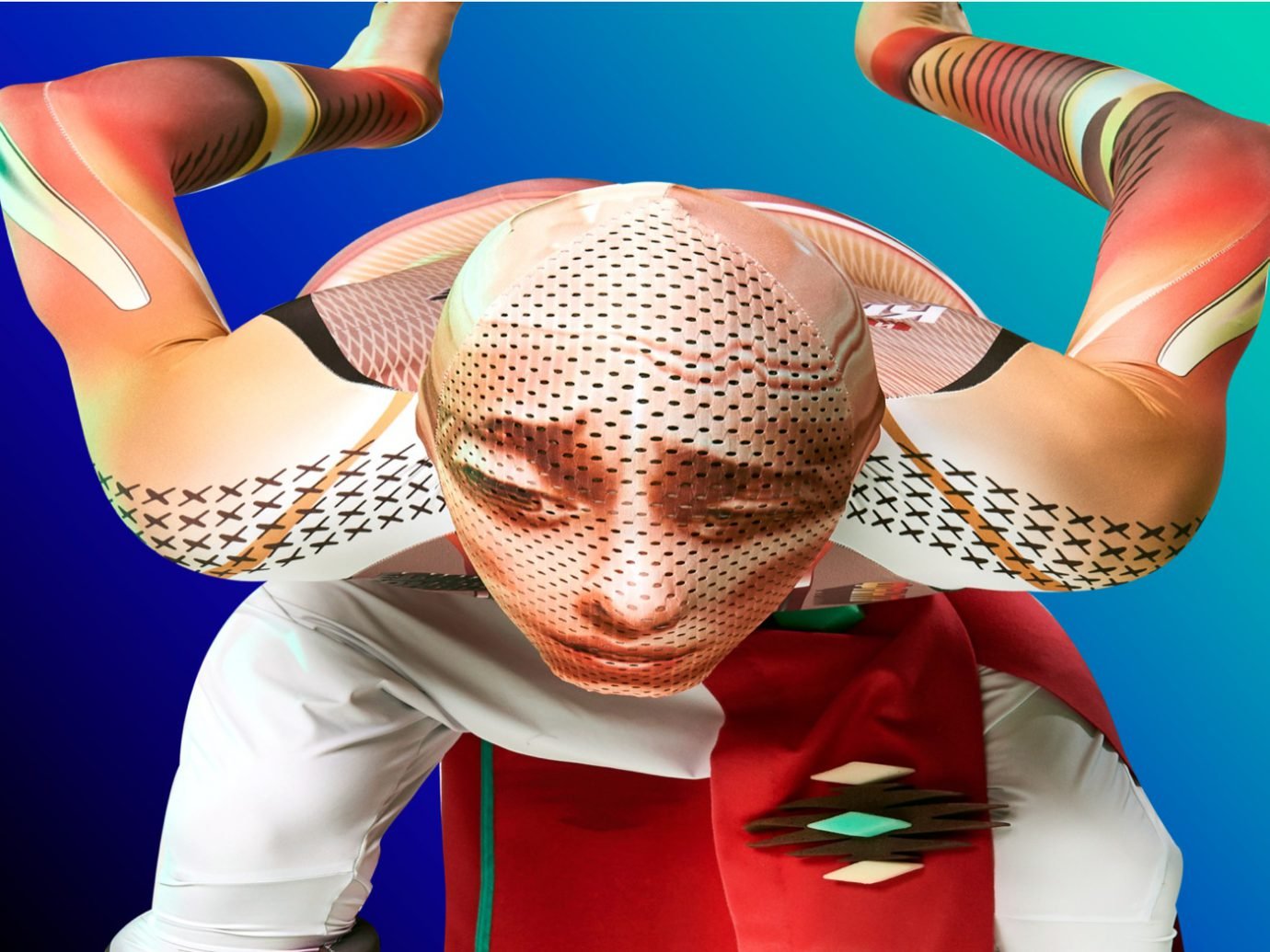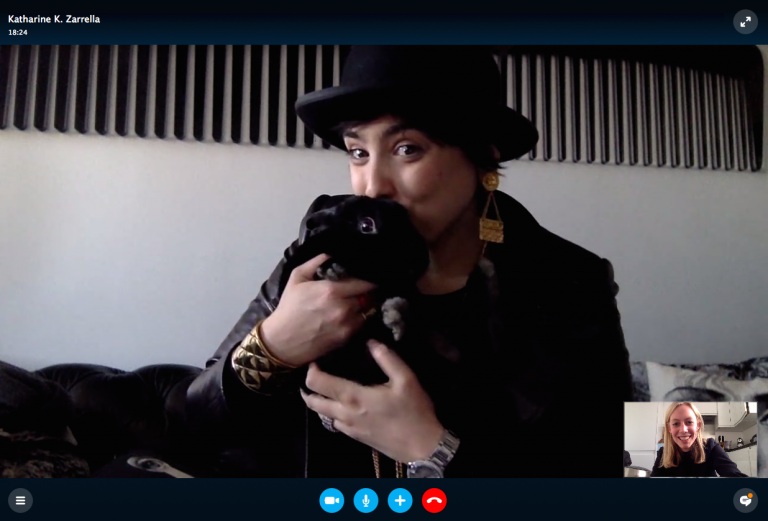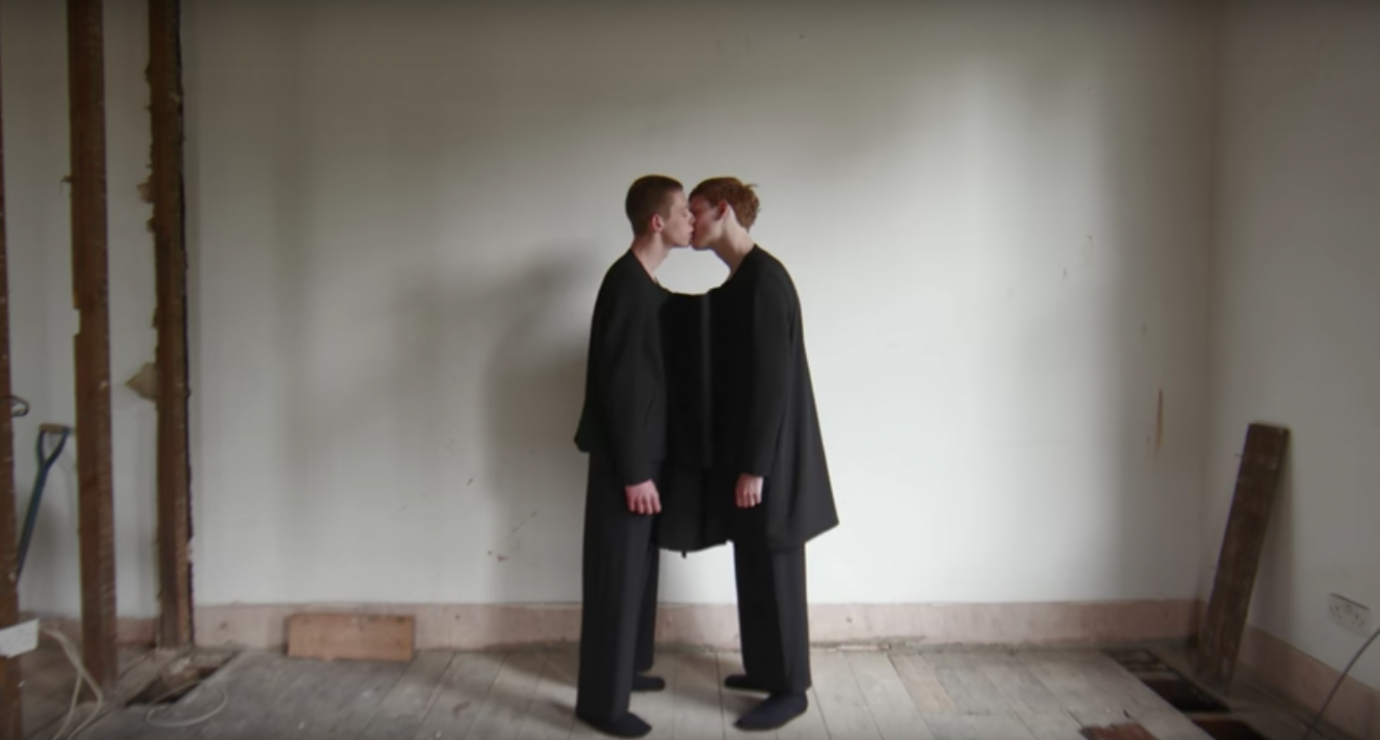“IF YOU THINK OF AN ALTAR IN A CHURCH OR TEMPLE, IT HAS AN AWARENESS OF HOW PEOPLE WORSHIP IT. THAT’S THE SORT OF THING I AM TRYING TO APPROACH.”
Tell me about your background – when did you realise you wanted to be an artist?
When I was very small I used to say I wanted to be an artist, but it wasn’t very serious, I feel like it was just by chance. I just always drew. And then, even at school, I made art because I enjoyed it – it’s the thing I wanted to do. It went on from there. I thought, do I want to go to art school? Yes. I’ve had plenty of years of self conscious self-doubt. But it was never about whether I wanted to be an artist. It’s more like – do I want to make art? And the answer is yes.
Your work often blurs the lines between the space that a piece of art occupies and the space that a viewer occupies – particularly with The Wardrobe became a head and we all bowed down. Is human interaction within your work important?
There’s an element of spectacle to a lot of the sculptures I make. They occupy the space in a particular way. This is because a lot of reference points of mine are to do with heraldic or religious things and iconography. And inherent within that, is an icon being there for a viewer or a worshiper: there’s that very direct relationship between them.
If you think of an altar in a church or temple, it has an awareness of how people worship it. That’s the sort of thing I am trying to approach. I thought of that piece as a deconstructed totem.
“I LIKE TO THINK OF THE WORK AS VERGING ON NOT QUITE ACCEPTABLE.”
There is a contemporary ‘primitive’ nature to your work. Where does this influence come from?
I think it comes from the materials I use which have an immediacy to them. These materials can be quick to work with, like fabric – it’s just the process of cutting things out which can then create very impactful things to look at. Also, it comes from the symbolic nature of certain imagery I look at, and motifs which recur in my work.
There is directness in how parts of my work are created and, within that directness, there’s simplicity. I am practical in the way I approach things. I like to try to make shortcuts to create stuff. That’s quite an interesting process for me – thinking about something to achieve and the end goal, but not exactly going through the fixed way of making it.
…it’s like an abstraction isn’t it?
Yeah, it’s part abstraction. Also if you’re making a sculpture or an object, I like the point where something ceases to be a formal work of art. I like to think of the work as verging on not quite acceptable, like is this too much of a mess?
It’s testing the boundaries of what is representative…?
Yeah – I like a lot of modernist sculptures, someone like Jacob Epstein. It’s an old stance of substantial and macho sculptures that artists I like used to make. And my work undercuts that. As much as I admire certain things, I don’t think that attitude fits making an artwork now – or that’s at least not how I want to be. I like the fallibility or vulnerability of how an artwork can be.
“IT CAN REALLY STUNT WHAT YOU’RE DOING WHEN YOU DON’T HAVE THE MONEY, MATERIALS OR TIME TO DO SOMETHING.”

